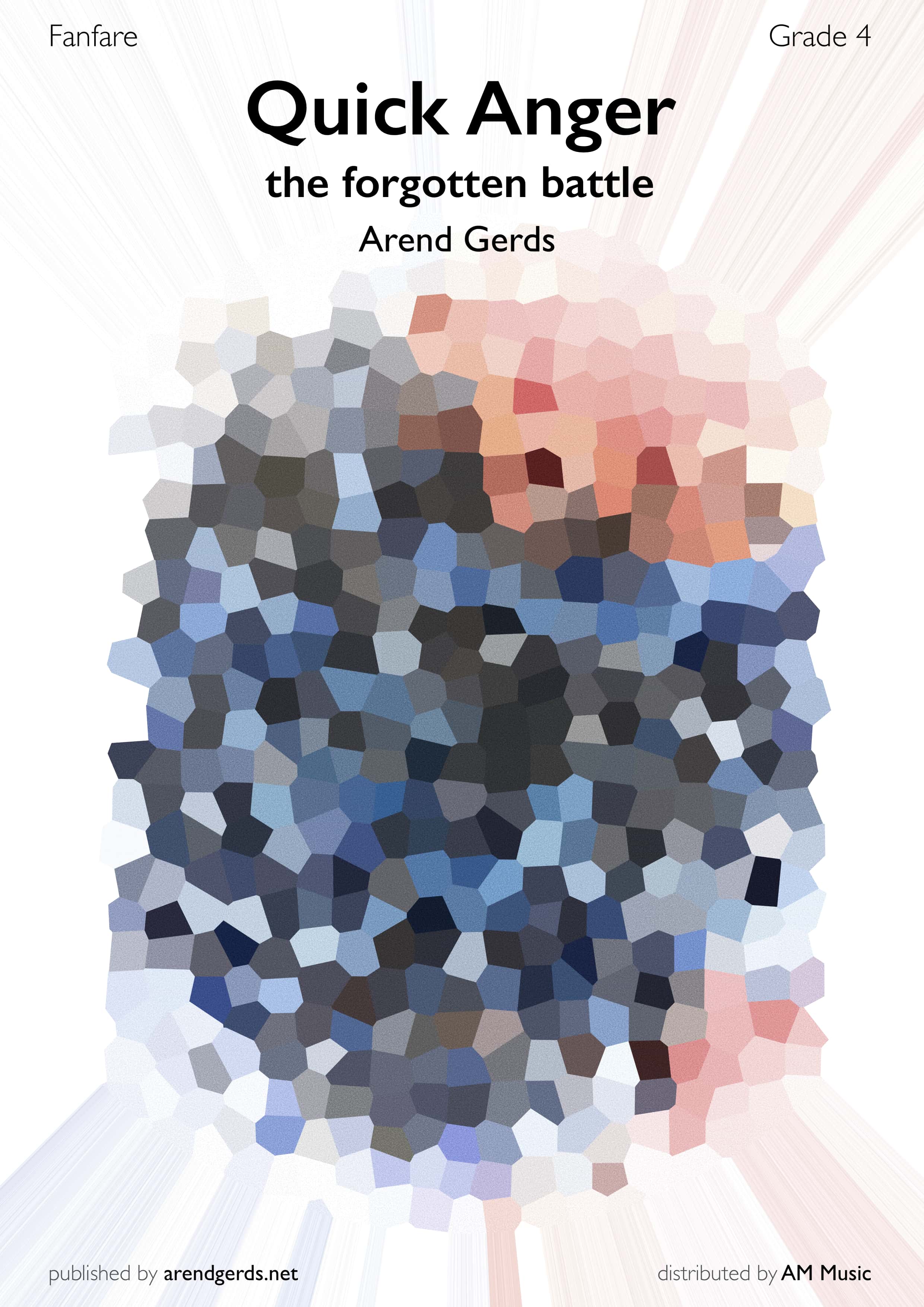Description
'Quick Anger, the Forgotten Battle' describes Operation 'Quick Anger' in three parts, each capturing different
aspects of the operation and its preceding events. The first part is marked by an agitato character, culminating
in a quiet, still atmosphere, much like the silence that settled over Westervoort after November 17, 1944. The
second part, in a calmer tone, describes the winter of 1944-45, focusing on the planning of operations and
renewed hope for further liberation. The third part features darker colors and has a more irregular style that
builds up to a grandioso phrase representing the liberation of Westervoort and Arnhem.
'In Westervoort, after the partially successful Operation Market Garden in 1944, the residents experienced the battle around Arnhem. Following the retreat of the British and Polish forces across the Rhine, Westervoort became part of the front line. Shells landed daily, killing much livestock. Residents living near the Rhine were quickly ordered to evacuate their homes. By November 17, 1944, the village was completely deserted. In February 1945, the attack on Germany east of Nijmegen began. The operations proceeded successfully. The liberation offensive in the Betuwe region (Operation Destroyer) was planned for March/April 1945. Once the Rhine at Driel was reached, it would be crossed immediately to launch the capture of Arnhem. This operation was named “Quick Anger. ” After intense battles, the area between Nijmegen and Arnhem was liberated on April 4, 1945, and the Allies reached the Rhine ’ s banks near Driel. The military leadership was greatly concerned about the waterlogged ground in the area. Could it support a large troop movement? During a Commanders ’ Conference, General Foulkes decided not to use Driel for the river crossing for the attack on Arnhem, deeming the risk of failure too great. Instead, the new crossing point was set at Westervoort, further east. This necessitated a massive logistical operation. Around 20,000 soldiers and over 2,000 vehicles began moving toward Westervoort via the emergency bridges at Emmerich or Doornenburg. Soon, the roads were filled with a massive traffic jam of vehicles that lasted four days. Westervoort came into view, and the liberation of Arnhem was near. On April 12, Operation “Quick Anger ” commenced with a massive bombardment. In just two hours, 70,000 shells were fired at Arnhem. Afterward, the first troops crossed the IJssel River in storm boats. The opposite bank had been thoroughly churned by shell impacts. The Germans in Fort Westervoort quickly surrendered, and within a few hours, the far bank was secured. The Allies immediately began constructing a temporary bridge that was already prepared nearby in the river. Meanwhile, amphibious vehicles transported troops across.
'In Westervoort, after the partially successful Operation Market Garden in 1944, the residents experienced the battle around Arnhem. Following the retreat of the British and Polish forces across the Rhine, Westervoort became part of the front line. Shells landed daily, killing much livestock. Residents living near the Rhine were quickly ordered to evacuate their homes. By November 17, 1944, the village was completely deserted. In February 1945, the attack on Germany east of Nijmegen began. The operations proceeded successfully. The liberation offensive in the Betuwe region (Operation Destroyer) was planned for March/April 1945. Once the Rhine at Driel was reached, it would be crossed immediately to launch the capture of Arnhem. This operation was named “Quick Anger. ” After intense battles, the area between Nijmegen and Arnhem was liberated on April 4, 1945, and the Allies reached the Rhine ’ s banks near Driel. The military leadership was greatly concerned about the waterlogged ground in the area. Could it support a large troop movement? During a Commanders ’ Conference, General Foulkes decided not to use Driel for the river crossing for the attack on Arnhem, deeming the risk of failure too great. Instead, the new crossing point was set at Westervoort, further east. This necessitated a massive logistical operation. Around 20,000 soldiers and over 2,000 vehicles began moving toward Westervoort via the emergency bridges at Emmerich or Doornenburg. Soon, the roads were filled with a massive traffic jam of vehicles that lasted four days. Westervoort came into view, and the liberation of Arnhem was near. On April 12, Operation “Quick Anger ” commenced with a massive bombardment. In just two hours, 70,000 shells were fired at Arnhem. Afterward, the first troops crossed the IJssel River in storm boats. The opposite bank had been thoroughly churned by shell impacts. The Germans in Fort Westervoort quickly surrendered, and within a few hours, the far bank was secured. The Allies immediately began constructing a temporary bridge that was already prepared nearby in the river. Meanwhile, amphibious vehicles transported troops across.
€150,00 EUR

Quick Anger
Digital (PDF) – available for direct download
€150,00 EUR
PDF & Hard copy
Compositions in this webshop are available digitally as well as hard copy.
Levertijd
Digital sheet music is provided as a download instantly after placing the order.
Hard copy sheet music will be shipped within three business days.
Vragen?
If so, please contact us using the -> contact form
